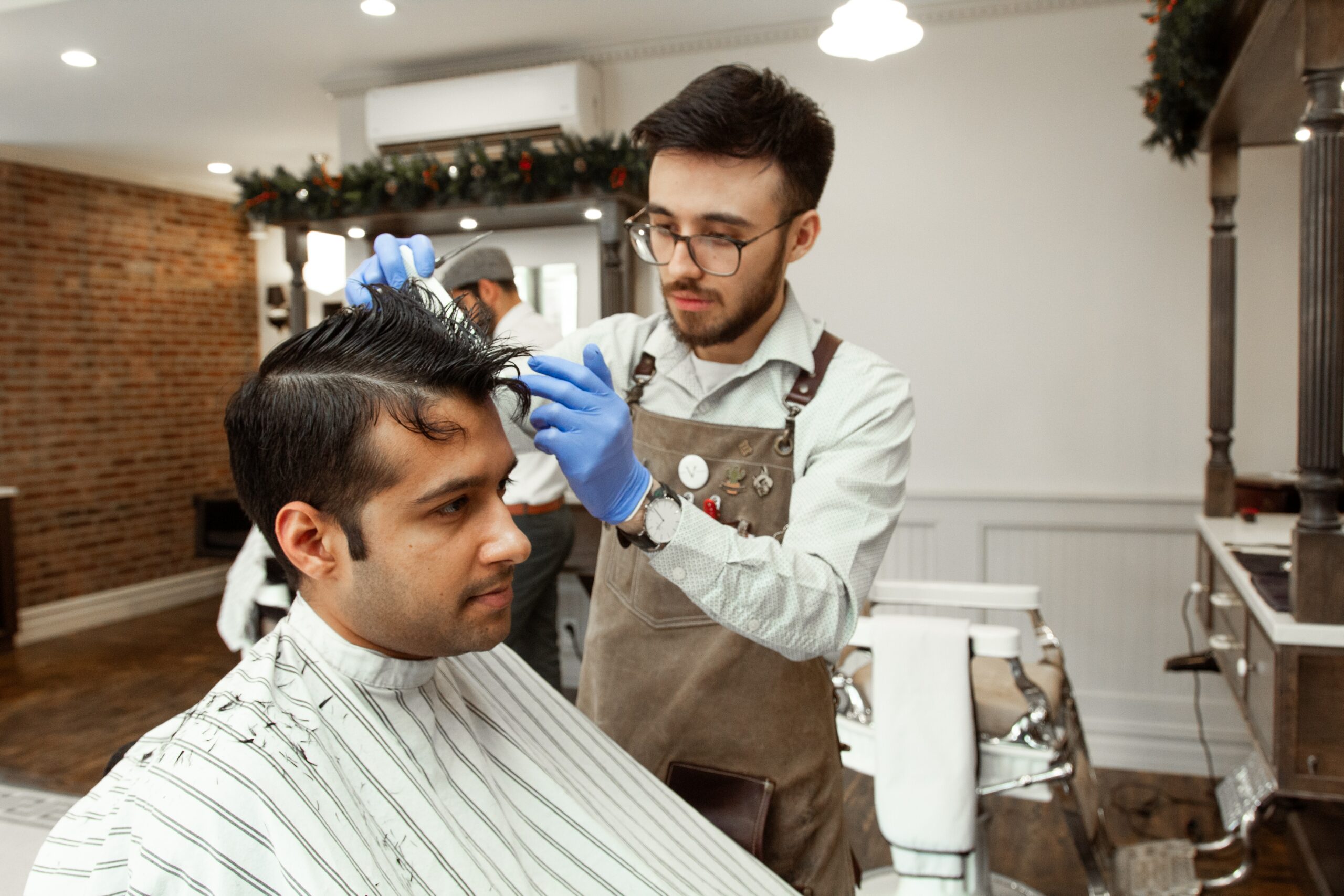If you are a hairdresser or a barber, you have probably wondered whether it is better to cut hair dry or wet. In this article, we will help you solve this question and determine which technique is most suitable to use with your clients. Keep reading to find out more!
Dry Hair: Mastering the Details
When cutting hair, many hairdressers and barbers prefer to treat dry hair for various reasons:
Accurate visualisation: When working with dry hair you get a better view of the natural texture and structure of the hair. This allows you to identify the different areas that need more attention in order to make precise and detailed cuts. This helps to avoid overexposure of the scalp and to create a cut that adds volume and texture to the hair.
Total control of the hairstyle: By cutting dry hair, you can instantly check how the final cut looks and if you notice any needed improvement you can do it on the go. This gives a more satisfactory end result. This is especially recommended for people with fine or thin hair, as it allows the stylist to clearly see how much hair is being removed.
Longer lasting style: Because dry haircutting is done with the natural texture and pattern of the hair in mind, the resulting style tends to last longer. By working with the hair in its natural state, the cut adapts better to the shape and texture of the hair, which helps the style last longer without requiring frequent touch-ups.
Textured crop with high taper fade
OBJECTIVES
- Successfully map out and section the haircut.
- Create shape and structure in the haircut.
- Create a high taper fade.
- Analyse natural hair movement and behaviour.
TARGET AUDIENCE
- Starter to Intermediate.
TECHNICAL SKILLS
- Scissor Control.
- Texturising.
- Clipper work.
- Sectioning patterns.
Wet hair: Versatility and fluidity
Although dry hair is a very popular technique, you can also choose to work with wet hair. Let’s see why this technique also has its advantages:
Ease of handling: Wet hair is more manageable as well as softer, which makes it easier to create defined lines and shapes during cutting. This is especially useful on dense or curly hair, where as dry hair can be harder to control.
Faster speed: Cutting wet hair can be faster, as the scissors glide smoothly through wet hair. This allows stylists to be more efficient in their work and treat more clients in less time.
Versatile styling: By cutting wet hair, stylists have the opportunity to experiment with different hairstyles and styles. The wetness of the hair makes it possible to create more flexible looks and explore new styling possibilities.
Curly hair creative cut
OBJECTIVES
- Analyse natural hair movement and behaviour
- Combine various male hairdressing and barbering techniques
- Use a variety of hairdressing tools
- Work with texturising techniques
TARGET AUDIENCE
- Intermediate to advanced
TECHNICAL SKILLS
- Sectioning patterns
- Hair characteristics
- Hair distribution
- Cutting angles
Dry vs wet hair: The perfect choice
There is no one technique that is better than the other. The right choice will depend on the individual hairdresser and barber, as well as the type of cut, the hair style and the preferences of each client. Generally, a combination of both techniques is chosen, starting with wet hair for the main cuts and then refining with dry hair.
There are advantages to working with both wet and dry hair. That’s why it’s important to explore different techniques and keep up to date with the latest trends, techniques and products. This way, you will be able to offer your clients the best results and a unique experience on every visit.






